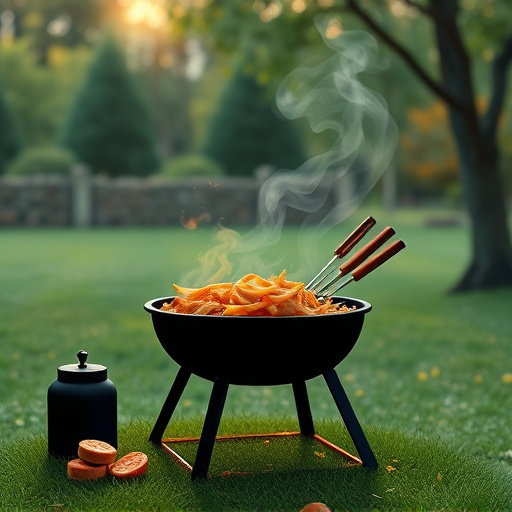To achieve a delicious beef BBQ, select high-quality marbled cuts like baby back or St. Louis style ribs (1/2 inch thick), dry brine with salt and spices for 3-5 days, use a blended rub of brown sugar, salt, pepper, smoked paprika, garlic powder, etc., cook over direct and indirect heat (225°F – 250°F), monitor temperature to 203°F, baste regularly with sauces or liquid blends, finish with glazes like brown sugar ketchup or spicy chipotle, rest for 10-15 minutes before slicing, and present with complementary sides.
Grill enthusiasts, prepare for a culinary journey as we uncover the secrets behind crafting the perfect sweet and smoky beef ribs. This comprehensive guide takes you from choosing the right cut to mastering grilling techniques. Learn the art of dry brining for maximum flavor, blending spices for a smoky kick, and controlling heat to achieve tender, juicy ribs. With strategies for basting and finishing touches like glazes, you’ll create a mouthwatering beef BBQ recipe that will have your taste buds dancing.
- Choosing the Perfect Ribs: Quality and Cut Matter
- Preparation: Dry Brining for Flavorful Results
- The Magic of Rub: Creating a Delicious Smoky Blend
- Grilling Techniques: Direct and Indirect Heat Combinations
- Temperature Control: The Key to Tender, Juicy Ribs
- Basting Strategies: Adding Moisture and Flavor
- Finishing Touches: Glazes and Sauces for Extra Kick
- Resting and Serving: Ensuring a Tasty Experience
Choosing the Perfect Ribs: Quality and Cut Matter
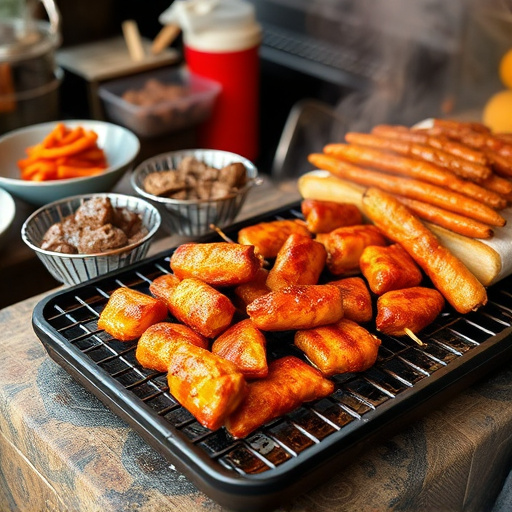
When it comes to grilling sweet and smoky beef ribs, choosing the right ones is half the battle won. Opt for high-quality, marbled cuts like baby back or St. Louis style ribs. The meat should be tender with a good amount of fat, which ensures both juiciness and flavor during the slow cooking process. Look for ribs that are at least 1/2 inch thick, as this indicates a better flavor profile and slower cooking time, allowing for more complex smoke flavors to develop.
The cut of the ribs is equally important. Different cuts have distinct characteristics and will require varying grilling techniques. Baby back ribs, for instance, have less bone and fat, making them easier to cook evenly but may need a little extra moisture. St. Louis style, on the other hand, has more meat between the bones, offering a heartier, richer experience but requires careful attention to prevent overcooking. Choosing the right pair of ribs is key to crafting a memorable beef bbq recipe that will satisfy grill enthusiasts.
Preparation: Dry Brining for Flavorful Results
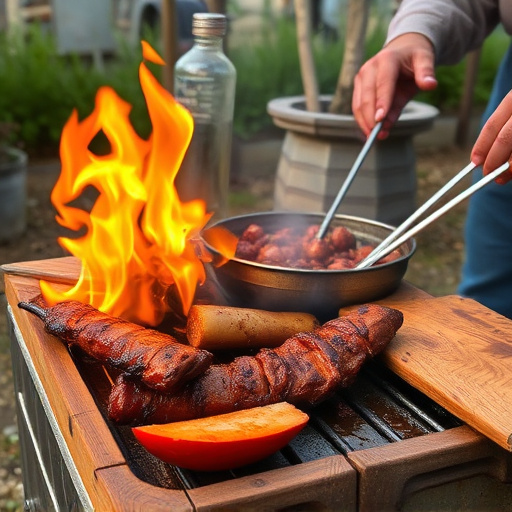
Preparation is key when crafting sweet and smoky beef ribs, and one of the most effective techniques is dry brining. This simple process involves curing the ribs with a mixture of salt and various spices, enhancing their natural flavors. By massaging the dry rub into the meat, you draw out moisture, which not only tenderizes the ribs but also creates pockets that allow smoke to penetrate during grilling.
For this method, choose a high-quality cut of beef ribs, preferably with good marbling. Mix equal parts coarse salt and brown sugar along with your favorite spices like paprika, garlic powder, and peppercorns. Rub the mixture generously over the ribs, ensuring every surface is coated. Wrap them tightly in plastic wrap and refrigerate for 3–5 days. This brining process will result in incredibly flavorful, tender, and smoky beef ribs that are sure to impress any grill enthusiast searching for the perfect BBQ recipe.
The Magic of Rub: Creating a Delicious Smoky Blend
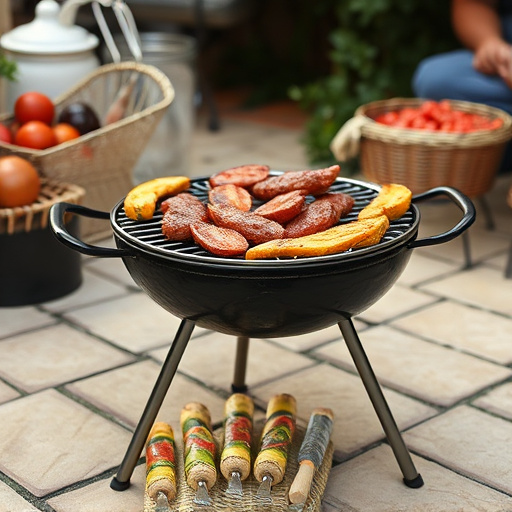
The secret to incredible sweet and smoky beef ribs lies in the rub—a carefully crafted blend of spices that enhances the natural flavors of the meat. Creating your own beef BBQ recipe allows for a personalized touch, catering to your taste preferences. Start with a base of brown sugar, salt, and pepper, which provide a rich, savory foundation. Then, add a variety of smoked paprika, garlic powder, onion powder, chili powder, and cayenne pepper for that distinctive smoky flavor. A pinch of ground mustard and cinnamon adds complexity, balancing the sweetness from the sugar. This magical rub not only coats the ribs but also penetrates the meat during the slow cooking process, resulting in tender, succulent ribs with a mouthwatering smoky aroma. Experimenting with different spice ratios allows you to fine-tune your beef BBQ recipe until it’s perfect for your palate.
Grilling Techniques: Direct and Indirect Heat Combinations
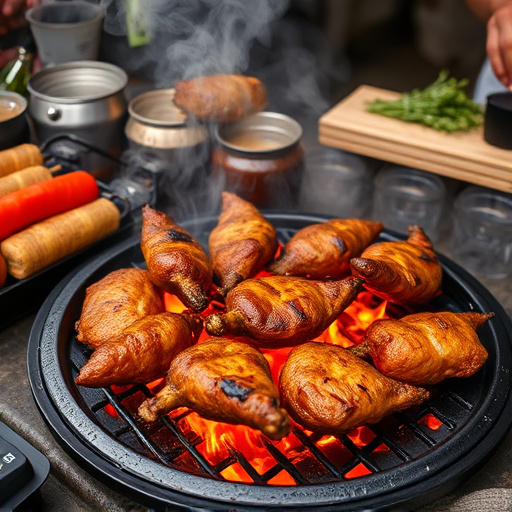
Grilling sweet and smoky beef ribs requires a thoughtful approach to heat, specifically the strategic use of direct and indirect heat combinations. Direct heat, characterized by high, intense flames, is ideal for searing the exterior of your ribs, locking in that mouthwatering juice and developing a delightful crust. This initial step should take around 3-4 minutes per side over high heat.
However, achieving the perfect smoky flavor necessitates shifting to indirect heat. Lowering the heat and moving the ribs away from direct flames allows for slower, moist cooking. This method ensures the internal temperature of the ribs increases steadily, resulting in tender meat that glistens with a rich sauce. Indirect heat should be maintained at around 225°F (107°C), creating an environment where the smoke can do its magic for approximately 3-4 hours until the ribs are fall-off-the-bone tender. This combination of direct and indirect grilling techniques is key to crafting the ultimate beef bbq recipe.
Temperature Control: The Key to Tender, Juicy Ribs
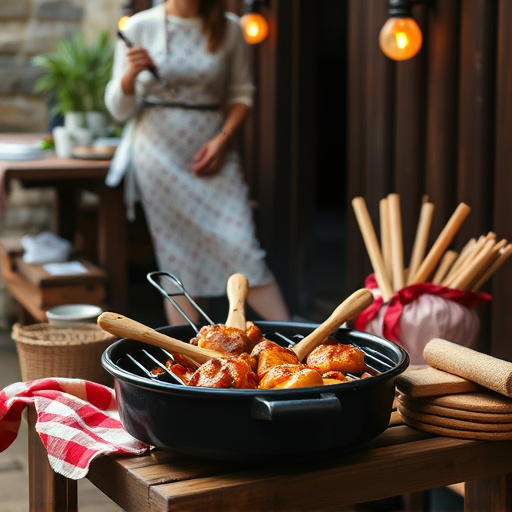
For grill enthusiasts looking to perfect their beef BBQ recipe, temperature control is the secret ingredient for achieving tender, juicy ribs. The ideal cooking range for beef ribs is between 225°F and 250°F (107°C – 121°C). This slow, low-and-steady approach allows the collagen in the meat to break down, resulting in a tender finish. Maintaining consistent temperature throughout the cook ensures even cooking, preventing overdone or undercooked sections.
Invest in a good meat thermometer to monitor the internal temperature of your ribs. Aim for a final reading of 203°F (95°C) for optimal tenderness. This method may take longer than high-heat grilling techniques, but the payoff is worth it—juicy, flavorful, and fall-off-the-bone beef BBQ ribs that will satisfy any grill master’s craving.
Basting Strategies: Adding Moisture and Flavor
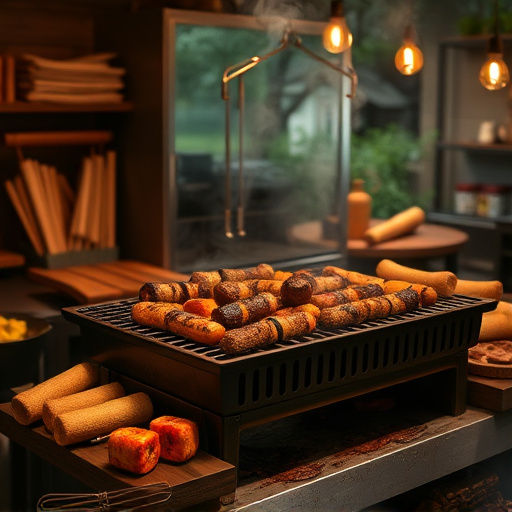
Basting strategies are an essential part of perfecting your sweet and smoky beef ribs on the grill for BBQ enthusiasts. Basting involves brushing a sauce or liquid mixture over the meat during cooking, which helps to add moisture and flavor. This technique ensures that your ribs remain tender and juicy, preventing them from drying out over the coals. By applying a basting sauce at regular intervals—typically every 30 minutes or so—you can create a mouthwatering crust while locking in that delicious barbecue flavor.
When it comes to beef BBQ recipes, the right basting strategy can make all the difference. Experiment with various sauces, such as a blend of brown sugar, vinegar, and paprika for a sweet and tangy kick, or try a more savory option with Worcestershire sauce, garlic, and smoked paprika. The key is to find a balance between sweetness and smokiness that caters to your taste preferences.
Finishing Touches: Glazes and Sauces for Extra Kick
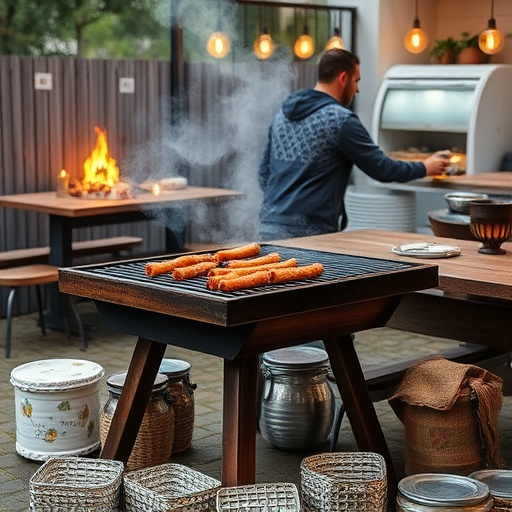
For grill enthusiasts looking to elevate their sweet and smoky beef ribs, the finishing touches—glazes and sauces—play a crucial role in adding an extra kick to every bite. Incorporating these flavor enhancers can transform your simple beef BBQ recipe into a culinary masterpiece. Glazes, with their sticky consistency, not only seal in moisture but also infuse the ribs with rich, complex flavors. Popular choices include a mix of brown sugar, ketchup, and Worcestershire sauce, which creates a balanced sweetness and tanginess that complements the smoky profile of the ribs.
Sauces, on the other hand, offer a more liquid option that coats the ribs, providing both moisture and extra flavor depth. Barbecue sauces are a classic choice, with their blend of tomatoes, spices, and smokiness that enhances the natural taste of the beef. Experimenting with different sauces, such as a spicy chipotle or a tangy mango-based glaze, can add variety to your grilling routine, making each batch of sweet and smoky beef ribs unique and irresistible.
Resting and Serving: Ensuring a Tasty Experience
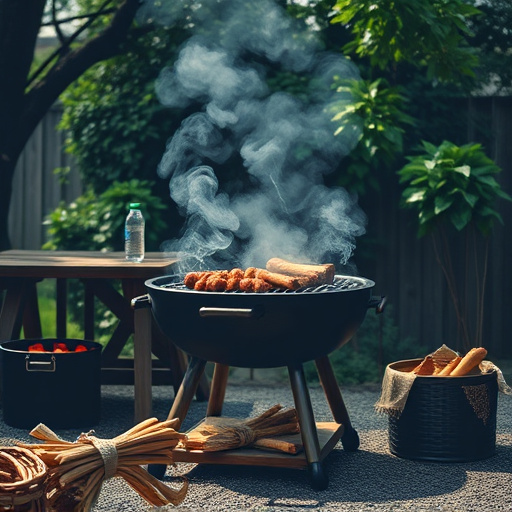
After grilling your sweet and smoky beef ribs to perfection, it’s crucial to allow them to rest for 10-15 minutes before slicing. This resting period lets the juices redistribute throughout the meat, ensuring a tender and juicy bite with every slice. Serving these ribs straight off the grill may result in a drier experience due to the residual heat causing further moisture loss.
Resting also provides an opportunity to create a stunning presentation. You can arrange the ribs on a platter, drizzling them with some of the barbecue sauce for extra glamor. Add a side of crispy potato wedges or coleslaw to complete the meal. For a true beef bbq recipe enthusiast, this resting and serving technique ensures a delightful sensory experience that elevates the simple act of enjoying delicious, smoky ribs.
